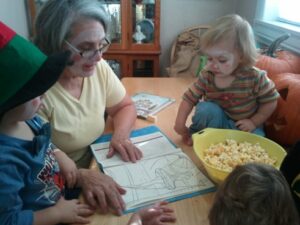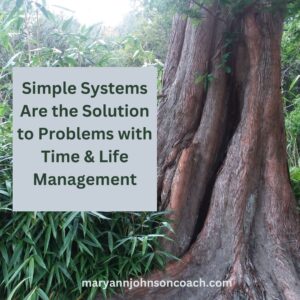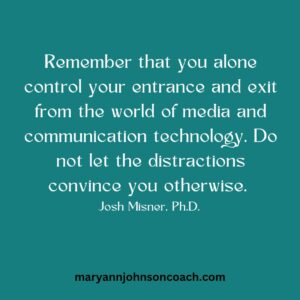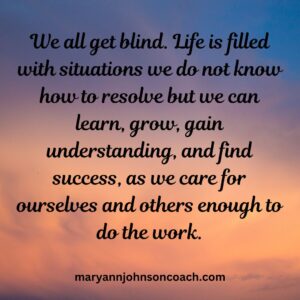 This week, I had an experience that brought to mind the importance of letting our kids know, daily, that we see them and that they matter. It brought back many memories of families I have worked with, parents I have mentored, and the huge impact I’ve seen when moms and dads learn to ‘see’ their kids during the mundane moments of every day.
This week, I had an experience that brought to mind the importance of letting our kids know, daily, that we see them and that they matter. It brought back many memories of families I have worked with, parents I have mentored, and the huge impact I’ve seen when moms and dads learn to ‘see’ their kids during the mundane moments of every day.
A universal human need is to matter, especially to those we love. We can all satisfy this need for others, especially in our families, in simple ways. When our children or others we cross paths with feel seen, it builds confidence and strengthens a sense of self-worth. It brings moments of joy. But what does it mean to see someone? I experienced this kind of ‘seeing’ this week.
MY EXPERIENCE
Don takes radiation treatments, and so for almost six weeks, we will be at the hospital every weekday morning. When we arrive, we pull into the valet parking lane, I get Don’s walker out, help my mom, and then we make our way into the hospital while someone parks our car. When we’re finished, we get our keys, and a sweet valet volunteer takes them and heads out to retrieve our car.
The night before this experience, we had our first frost. The next morning, leaves were falling like rain from all the trees. When we returned for our car, the valet lane was filled with leaves, and a young man was blowing them out of the road onto the lawn. However, there were so many cars that he had to keep stopping and waiting. They parked our car in the lane that is usually reserved for those who are loaded and ready to leave. Again, he had to stop. He didn’t seem frustrated, which amazed me. When we got to our car, I turned towards him, smiled, and said, “I’m sorry you have to wait for us.” He returned my smile and responded with, “That’s Ok. Not a problem.” Then I busied myself getting Mom and the walker into the car. As I prepared to enter our vehicle, I heard this young man holler, “You have a good day!” What? I turned, smiled, and told him to do the same. He had kept us in his sight for a few extra minutes so he could wish us well as we drove off. I can tell you, I felt seen.
This experience touched me so much that I did a U-turn and went back. I parked and walked to where he was. I told him that I appreciated his taking notice. I told him I was a writer and wanted to share this experience with my readers because when we ‘see’ each other, it matters. He was willing to let me take a picture of us. He was all smiles and told me I was special. I could tell from his face that he felt special, too.
Can you see the simplicity of this moment and its value? This is what can and needs to happen in families multiple times a day.
How can that be done?
It requires that we take time as we move through our day to ‘see’ our children. If possible, say goodbye at the door when they leave. Smile and say, “Glad you’re home,” when they return. Touch an arm and smile as you pass in the hall. No words needed. Pat the back of a child doing the dishes or folding laundry, then go on your way. Give a word of encouragement and a smile to someone doing their homework. Look in a bedroom door of someone cleaning their room and smile encouragement or say, “You’re doing a good job.” If your child is sitting on the couch watching TV, sit by them, pat a knee, and smile. Then get up and go. Rub a back while sitting at church or while waiting at an appointment. The list goes on. This works even with teens.
IT’S A PRACTICE
Each of these interactions takes less than a minute and can be done all day long if we understand their value. It isn’t just about being nice. It isn’t about being a parent. It’s about letting another person know that they’re seen and that they matter.






 white face paint and lipstick. The white face paint was Halloween makeup I bought many years ago. It worked well enough. For red, we used what grandma had, lipstick. As I say, keep it simple. Then we tried on all the glasses, boas, ties, and other costume items. Jack fell in love with a hat and a bow tie. He asked me if he could have them. I said he could surely borrow them. “I don’t like borrow” he said, “I want to have them!” LOL
white face paint and lipstick. The white face paint was Halloween makeup I bought many years ago. It worked well enough. For red, we used what grandma had, lipstick. As I say, keep it simple. Then we tried on all the glasses, boas, ties, and other costume items. Jack fell in love with a hat and a bow tie. He asked me if he could have them. I said he could surely borrow them. “I don’t like borrow” he said, “I want to have them!” LOL sometimes we aren’t! We managed with what we had, and I made a circus book. I found a terrific site of circus pictures, printed them off, and put them into a binder. (Jack, Mary, and Maggie used it until it fell apart.) It also made a great circus coloring book.
sometimes we aren’t! We managed with what we had, and I made a circus book. I found a terrific site of circus pictures, printed them off, and put them into a binder. (Jack, Mary, and Maggie used it until it fell apart.) It also made a great circus coloring book.

 I have learned from lived experience that simple systems are usually the solution to difficult problems in time and life management. This was not an easy lesson to learn, and I occasionally still ignore this truth, but when I do,
I have learned from lived experience that simple systems are usually the solution to difficult problems in time and life management. This was not an easy lesson to learn, and I occasionally still ignore this truth, but when I do,
 Parenting is a place to learn to grow as a person. Seriously. : ) Even now, when I’m caregiving, rather than parenting, I experience examples of this type of growth. It always takes me off guard because I would like to think that in almost 75 years, I had gotten this growth thing handled. Silly, because learning and personal growth are a lifetime endeavor.
Parenting is a place to learn to grow as a person. Seriously. : ) Even now, when I’m caregiving, rather than parenting, I experience examples of this type of growth. It always takes me off guard because I would like to think that in almost 75 years, I had gotten this growth thing handled. Silly, because learning and personal growth are a lifetime endeavor.
 Let’s pick up where we left off last week. I shared
Let’s pick up where we left off last week. I shared 
 Thirteen years ago, I had a wonderful evening with my eight-year-old friend, Hailey. It was successful because time had been set apart for the activity, it happened consistently so Hailey could count on it, and I was present. When we want to solidify relationships in our family these three ingredients make all the difference.
Thirteen years ago, I had a wonderful evening with my eight-year-old friend, Hailey. It was successful because time had been set apart for the activity, it happened consistently so Hailey could count on it, and I was present. When we want to solidify relationships in our family these three ingredients make all the difference. 

 On March 3, 2024, I published an article titled
On March 3, 2024, I published an article titled 
 In our world, we’re so used to having technology always with us that it’s challenging to be without it for even a short time. Technology, as wonderful as it is, can be
In our world, we’re so used to having technology always with us that it’s challenging to be without it for even a short time. Technology, as wonderful as it is, can be 
 Early this spring Jodie was taking a short trip. She hauled the suitcase out of the garage so she could pack. Later, she asked me if I had seen it. No, I hadn’t but I went upstairs to help her look. We searched everywhere and then lo and behold we saw it! It was leaning up against the wall by the front door, in direct sight. It wasn’t hidden by anything. We weren’t looking for the obvious, I guess.
Early this spring Jodie was taking a short trip. She hauled the suitcase out of the garage so she could pack. Later, she asked me if I had seen it. No, I hadn’t but I went upstairs to help her look. We searched everywhere and then lo and behold we saw it! It was leaning up against the wall by the front door, in direct sight. It wasn’t hidden by anything. We weren’t looking for the obvious, I guess.